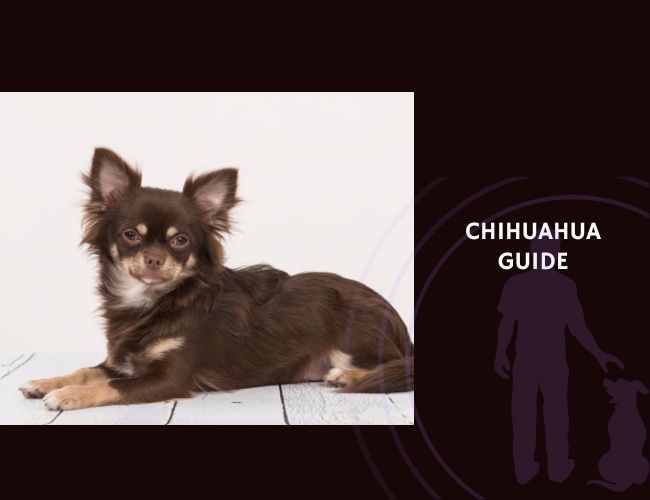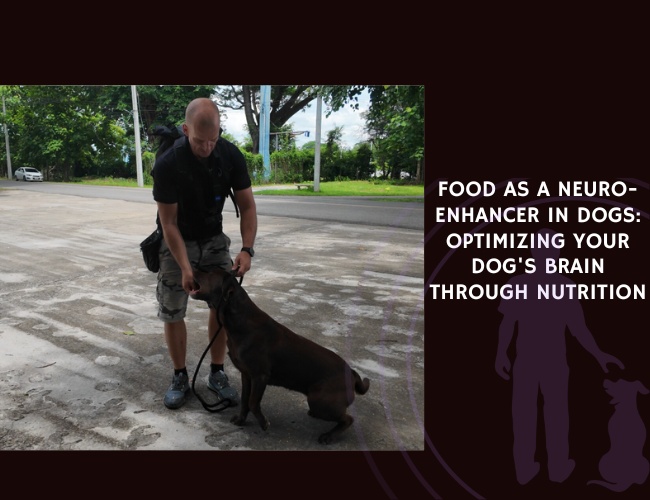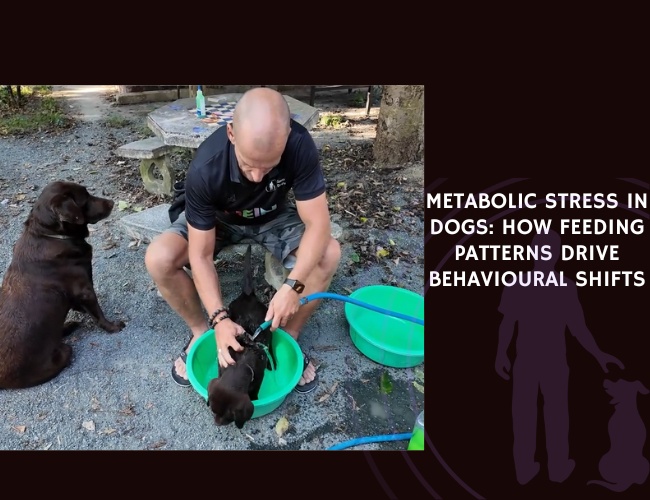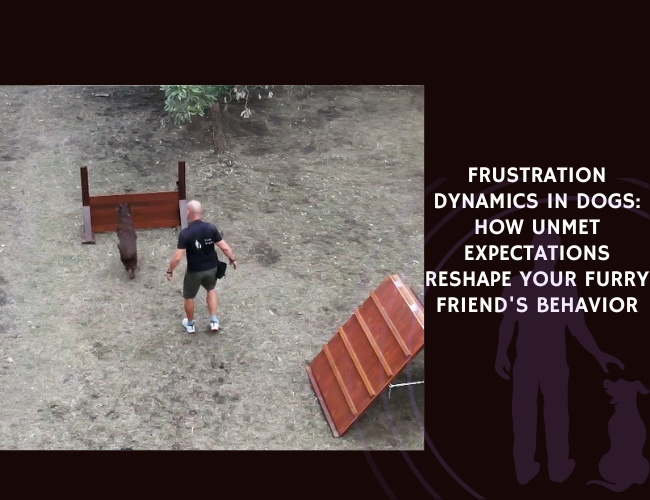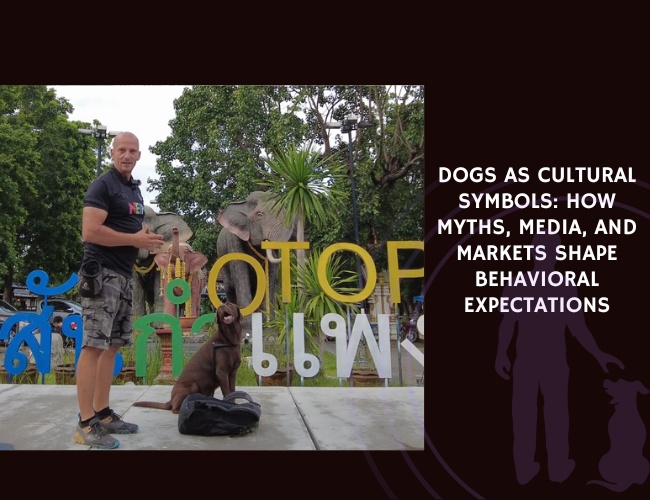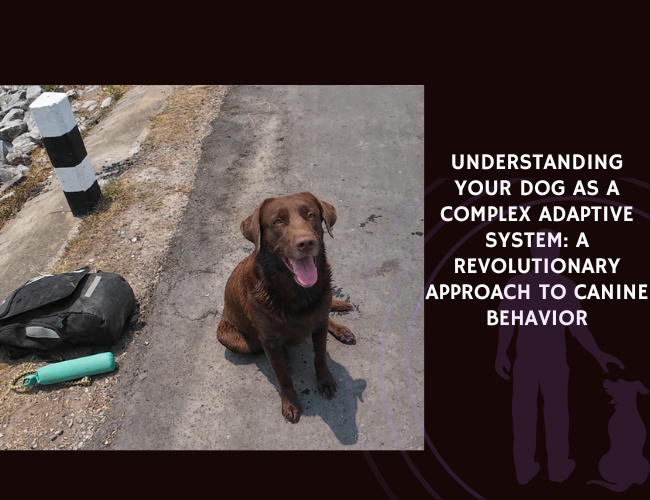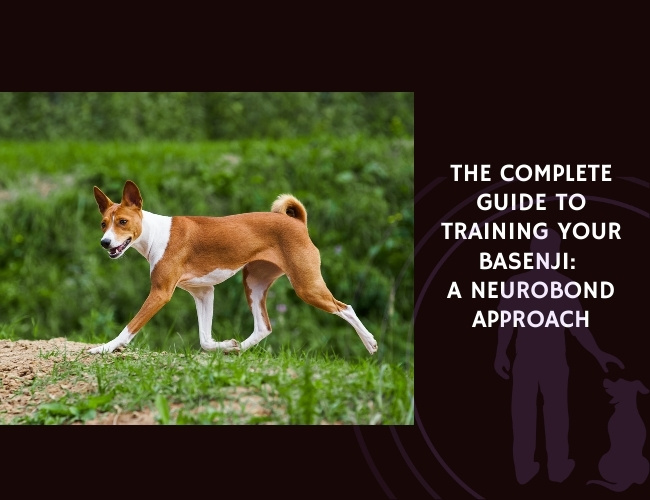From ancient Mexican temples to modern city apartments, the Chihuahua has journeyed through centuries as humanity’s tiniest canine companion. This remarkable breed, weighing no more than a newborn human baby, carries within its diminutive frame a spirit that rivals dogs ten times its size. Let us guide you through understanding these captivating creatures who’ve mastered the art of being small yet mighty.
The Chihuahua’s story begins in the mystical landscapes of Mexico, where archaeological evidence suggests their ancestors accompanied the Toltec and Aztec civilizations. Today, these pocket-sized companions have conquered hearts worldwide, proving that true character knows no size limits. Whether you’re already sharing your life with one of these spirited dogs or considering welcoming a Chihuahua into your home, understanding their unique needs and remarkable personality is essential for building that trusting relationship every dog owner cherishes.
Character & Behaviour
The Chihuahua’s personality presents a fascinating paradox – a tiny body housing an enormous spirit. Understanding your Chihuahua’s behavioral patterns means appreciating how their miniature stature shapes their worldview and interactions.
Boldness vs. Reactivity in a Miniature Frame
Your Chihuahua’s disproportionate confidence isn’t just amusing – it’s a complex behavioral trait rooted in survival instincts. This “big dog in a small body” syndrome manifests through behaviors that might surprise first-time owners:
Bold behaviors you might notice:
- Challenging dogs many times their size
- Fearlessly defending their territory
- Taking charge in multi-pet households
- Displaying unwavering confidence in familiar settings
This boldness, however, walks hand-in-hand with heightened reactivity. Your Chihuahua’s nervous system operates on high alert, processing threats differently than larger breeds. Their amygdala – the brain’s fear center – shows increased sensitivity to sudden movements and unfamiliar stimuli. This means your little companion might switch from confident to cautious in seconds, requiring your patient understanding.
The neurobiological mechanisms behind this behavior involve complex interactions between stress hormones and neurotransmitters. When your Chihuahua perceives a threat, their body releases cortisol and adrenaline at levels disproportionate to their size, creating intense fight-or-flight responses. Understanding this helps explain why your usually brave companion might suddenly tremble at a rustling leaf.
Attachment Intensity and Selective Bonding
Did you know your Chihuahua’s devotion to you involves the same hormone that bonds human mothers to their babies? Oxytocin, often called the “love hormone,” floods your Chihuahua’s system during positive interactions with you, creating bonds of remarkable intensity.
This selective bonding manifests in several ways:
Proximity-seeking behaviors:
- Following you from room to room
- Insisting on lap time whenever you sit
- Sleeping pressed against your body
- Becoming distressed when separated
Signs of jealousy and resource guarding:
- Wedging between you and other pets
- Vocal protests when you pet another animal
- Possessive behavior over your attention
- Selective aggression toward perceived rivals
Your Chihuahua’s attachment intensity means they often choose one primary person as their “special human.” This person becomes their safe base, their preferred companion, and often the only one who can calm them during stress. While this devotion feels wonderful, it’s important to encourage healthy independence to prevent separation anxiety.
Research suggests Chihuahuas show oxytocin spikes up to 300% higher during owner interaction compared to interaction with strangers. This biochemical response explains their reputation as “velcro dogs” – they’re literally addicted to your presence in the most beautiful way 🧡
Vocalization and Territorial Alerting
Your Chihuahua’s voice serves as their primary tool for communication and defense. Unlike larger breeds who might rely on physical presence for deterrence, Chihuahuas use their voices as both alarm systems and communication devices.
Understanding your Chihuahua’s vocal repertoire:
- Sharp, rapid barks: immediate threat detection
- Prolonged barking sequences: territorial warnings
- High-pitched yips: excitement or play invitations
- Growling undertones: serious warnings to back off
- Whimpering or crying: anxiety or attention-seeking
The acoustic structure of Chihuahua vocalizations reveals sophisticated communication patterns. Their barks contain frequency modulations that convey different emotional states – a skill they’ve refined through generations of close human companionship. Your Chihuahua might have specific barks for different family members, various types of visitors, or particular times of day.
This vocal behavior serves multiple purposes beyond simple alerting. For your tiny companion, barking creates a sonic barrier between themselves and perceived threats, buying time for you to intervene. It’s their way of saying, “I may be small, but I’m here, I’m watching, and I’m not afraid to announce it!”
Defensive Aggression and Size Compensation Behaviour
When your Chihuahua displays defensive aggression, they’re employing survival strategies honed over centuries. This behavior pattern, often misunderstood as “small dog syndrome,” actually represents sophisticated threat assessment and response mechanisms.
Common defensive behaviors include:
- Snapping at approaching hands or feet
- Lunging toward perceived threats
- Freezing in place before reactive displays
- Defensive positioning behind owner’s legs
These behaviors stem from your Chihuahua’s acute awareness of their vulnerability. In the wild, small animals survive through vigilance and quick defensive responses. Your domesticated Chihuahua retains these instincts, even in the safety of your home.
Size compensation behaviors often escalate in specific contexts:
- When approached by larger dogs
- During veterinary examinations
- When cornered or unable to retreat
- In response to sudden movements from above
Understanding these triggers helps you provide the security your Chihuahua needs. By recognizing early warning signs – dilated pupils, stiff body posture, lifted lips – you can intervene before defensive behaviors escalate. Remember, your Chihuahua isn’t being “mean” – they’re communicating insecurity in the only way they know how.
Environmental Sensitivity and Coping Strategies
Your Chihuahua experiences the world through heightened senses, making them exquisitely sensitive to environmental changes. This sensitivity affects everything from their stress levels to their daily comfort, requiring thoughtful management of their surroundings.
Environmental stressors that affect Chihuahuas:
- Temperature fluctuations (especially cold)
- Loud or sudden noises
- Changes in routine or household dynamics
- Unfamiliar scents or visitors
- Vibrations from appliances or traffic
Physiologically, your Chihuahua’s stress response involves measurable changes. Their heart rate variability decreases under stress, while cortisol levels spike more dramatically than in larger breeds. These biological responses explain why your normally confident companion might tremble during thunderstorms or hide when the vacuum appears.
Creating effective coping strategies means building a predictable, secure environment. Your Chihuahua thrives with consistent routines, designated safe spaces, and gradual exposure to new experiences. Consider providing a cozy den-like bed where they can retreat when overwhelmed – this taps into their instinctual need for small, secure spaces where predators can’t surprise them 🐾
Training & Education
Training your Chihuahua requires understanding their unique cognitive profile and learning style. These intelligent little dogs possess surprising mental agility, but their training needs differ significantly from larger breeds.
Trainability and Cognitive Retention
Your Chihuahua’s brain, while proportionally large for their body size, processes information differently than bigger dogs. Their working memory shows interesting patterns – excellent retention for routines and people, but sometimes challenged by complex command sequences.
Cognitive strengths in Chihuahuas:
- Rapid association between actions and rewards
- Strong memory for individual people and dogs
- Quick learning of household routines
- Excellent problem-solving in familiar contexts
Areas requiring patience:
- Generalizing commands across different environments
- Maintaining focus during extended training sessions
- Processing multiple-step commands
- Overcoming ingrained reactive behaviors
Research on canine cognition suggests Chihuahuas learn best through short, frequent training sessions rather than lengthy ones. Their attention spans typically max out at 5-10 minutes, making “micro-training” throughout the day more effective than traditional obedience classes. This approach aligns with their natural learning patterns and prevents frustration for both of you.
Age significantly impacts learning capacity in Chihuahuas. Puppies between 8-16 weeks show remarkable neuroplasticity, absorbing new information like tiny sponges. Adult Chihuahuas remain capable learners but may require more repetitions to establish new behaviors. Senior Chihuahuas often surprise owners by learning new tricks, proving that mental stimulation remains important throughout their lives.

Reinforcement Sensitivity and Engagement
Your Chihuahua’s response to different reinforcement types varies dramatically based on their individual personality and past experiences. Understanding what motivates your specific dog transforms training from a chore into joyful communication.
Reinforcement hierarchy for most Chihuahuas:
- High-value food treats (tiny pieces of chicken, cheese)
- Enthusiastic verbal praise in high-pitched tones
- Gentle physical affection (chest rubs, ear scratches)
- Play with favorite toys
- Access to preferred resting spots
Food motivation in Chihuahuas often exceeds that of larger breeds, partly due to their high metabolism requiring frequent refueling. However, treat size matters enormously – a training treat for a Labrador might constitute a full meal for your Chihuahua! Break treats into rice grain-sized pieces to maintain engagement without overfeeding.
Praise sensitivity in Chihuahuas connects directly to their bonding intensity. Your excited “Good dog!” releases dopamine in their brains, reinforcing behaviors as effectively as treats. Some Chihuahuas become so praise-motivated that verbal reinforcement alone sustains complex training programs.
The key to maintaining engagement lies in variety and timing. Alternate between reinforcement types to prevent habituation, and deliver rewards within 1-2 seconds of desired behaviors. This immediate connection helps your Chihuahua’s brain form strong behavioral pathways.
Potty Training Difficulties and Indoor Management
Potty training often presents the greatest challenge for Chihuahua owners. Their tiny bladders, high metabolism, and weather sensitivity create a perfect storm of house training difficulties. Let’s explore why this happens and how to succeed despite these challenges.
Biological factors affecting potty training:
- Bladder capacity of only 1-3 tablespoons
- Need to eliminate every 2-4 hours
- Rapid digestive transit time
- Poor cold tolerance affecting outdoor willingness
Your Chihuahua’s small size means accidents happen faster than with larger breeds. By the time they realize they need to go, they may have only seconds to reach an appropriate spot. This biological reality requires adjusting expectations and methods accordingly.
Successful potty training strategies:
- Scheduled potty breaks every 2-3 hours
- Immediate post-meal outdoor time
- Indoor potty options for weather extremes
- Consistent verbal cues and locations
- Enthusiastic celebration of outdoor success
Many Chihuahua owners find success with hybrid approaches – outdoor training when weather permits, with indoor pee pad backup for emergencies. This flexibility acknowledges your Chihuahua’s physical limitations while maintaining training consistency.
Remember, your Chihuahua isn’t being stubborn about potty training – their biology simply makes it more challenging. Patience, consistency, and realistic expectations lead to success where punishment and frustration fail.
Socialization Window and Behavioural Flexibility
The critical socialization period for your Chihuahua occurs between 3-14 weeks of age, with lasting impacts on their adult temperament. During this window, their developing brain shows maximum plasticity for accepting new experiences as “normal.”
Priority socialization experiences:
- Gentle handling by various people
- Controlled exposure to larger dogs
- Different surfaces and textures
- Common household sounds
- Car rides and carrying bags
- Veterinary handling practice
Early socialization shapes your Chihuahua’s behavioral flexibility throughout life. Puppies exposed to diverse experiences during this critical window show reduced fear responses, better stress recovery, and increased confidence as adults. Conversely, isolated puppies often develop lifelong anxieties and reactive behaviors.
Even after the primary window closes, continued socialization remains important. Your adult Chihuahua can still learn to accept new experiences, though the process requires more patience and systematic desensitization. Think of it like learning a language – easiest in childhood but possible at any age with proper instruction.
The quality of socialization matters more than quantity. One traumatic experience can outweigh dozens of positive ones, especially for sensitive Chihuahuas. Focus on creating successful, controlled exposures rather than overwhelming your tiny companion with too much too fast.
Touch Sensitivity and Training Tolerance
Your Chihuahua’s response to physical guidance during training reflects their heightened body awareness and vulnerability. Unlike larger breeds who might barely notice a guiding hand, Chihuahuas experience touch intensely, requiring modified training approaches.
Areas of particular sensitivity:
- Paws and legs (evolutionary protection)
- Tail and hindquarters
- Top of head (predator vulnerability)
- Neck and collar area
This sensitivity means traditional training methods involving physical manipulation often backfire with Chihuahuas. Forcing them into positions creates anxiety rather than learning. Instead, successful training uses luring, shaping, and capturing natural behaviors.
Touch-positive training adaptations:
- Lure into positions with treats
- Reward offered positions naturally
- Use verbal markers instead of physical corrections
- Practice gentle handling separately from training
- Build touch tolerance gradually
Your Chihuahua’s touch sensitivity also affects their training stamina. Physical discomfort from prolonged positions or repetitive movements occurs faster than in larger breeds. Keep training sessions short and vary positions to prevent fatigue or soreness.
Understanding and respecting your Chihuahua’s touch sensitivity transforms training from a battle into a dance. When they trust that you won’t force or hurt them, their natural intelligence and eagerness to please shine through 🧡
Nutritional Recommendations
Feeding your Chihuahua properly means understanding their unique metabolic needs. These tiny dynamos burn calories at rates that would astonish owners of larger breeds, requiring careful nutritional planning to maintain health and vitality.
Caloric Density and Metabolic Efficiency
Your Chihuahua’s metabolism operates like a hummingbird’s – fast, efficient, and constantly demanding fuel. Per pound of body weight, they require nearly double the calories of a large breed dog, yet their stomach holds less than a quarter cup of food.
Daily caloric needs by weight:
- 3-pound Chihuahua: 150-180 calories
- 4-pound Chihuahua: 200-240 calories
- 5-pound Chihuahua: 250-300 calories
- 6-pound Chihuahua: 300-360 calories
These calculations assume moderate activity levels. Your couch potato Chihuahua needs fewer calories, while an agility enthusiast requires more. Age also factors significantly – puppies and young adults burn calories faster than seniors.
The challenge lies in meeting these caloric needs without overfeeding. Your Chihuahua’s tiny frame means even one or two extra pounds represents significant obesity, straining joints and organs. Choose nutrient-dense foods that pack maximum nutrition into minimum volume.
Temperature regulation drives much of your Chihuahua’s caloric needs. Their high surface-area-to-volume ratio means they lose body heat rapidly, burning extra calories to maintain their 101-102°F body temperature. Winter months often require 10-15% more calories to compensate for this thermal loss.
Tiny. Fierce. Devoted.
Small body, massive spirit.
Your Chihuahua isn’t just a lapdog — it’s a lionheart in miniature. From fearlessly defending its space to shadowing your every move, this breed lives with intensity. Behind the bark is a nervous system tuned for survival, and every action — bold or reactive — reflects ancient instincts shaped by size and closeness to danger.
Velcro soul, selective love.
This dog doesn’t bond with the world — it bonds with you. Fueled by oxytocin and fierce loyalty, your Chihuahua will attach like glue and guard your presence with pride. That kind of devotion comes with responsibility. It means understanding their signals, easing their stress, and never mistaking their size for emotional simplicity.


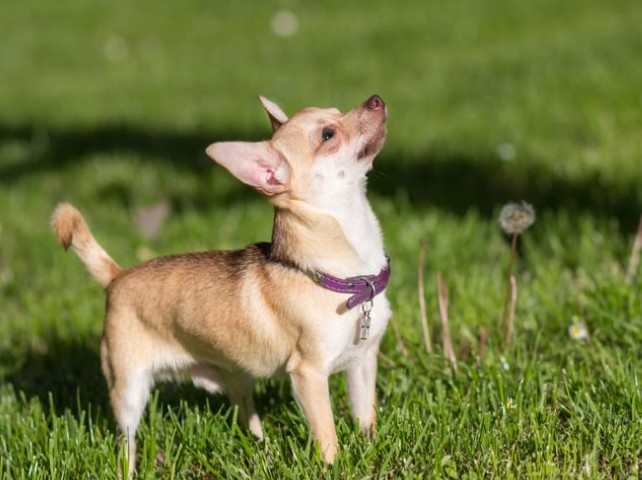
Built for warmth and warning.
Whether trembling from the cold or warning the world with a bark ten times their size, Chihuahuas are alert, vocal, and vulnerable. Managing their environment — from temperature to noise to routine — isn’t optional. It’s how you show love. Their tiny frame houses a sensitive system that thrives on structure, comfort, and your calm leadership.
Nutritional Support for Dental and Skeletal Health
Your Chihuahua’s skeletal system faces unique challenges. Their bones must be proportionally stronger than larger dogs’ to support daily activities, while their mouths often struggle with overcrowding and misalignment. Proper nutrition provides crucial support for these vulnerable systems.
Essential nutrients for bone health:
- Calcium: 50mg per pound body weight daily
- Phosphorus: Maintains 1.2:1 calcium ratio
- Vitamin D3: Enables calcium absorption
- Vitamin K: Supports bone matrix formation
- Magnesium: Prevents calcium deposits
The delicate balance between these nutrients matters enormously. Too much calcium interferes with phosphorus absorption, while insufficient vitamin D renders calcium useless. Quality commercial foods formulated for small breeds typically provide appropriate ratios, but understanding these needs helps you evaluate options.
Dental health in Chihuahuas requires special attention due to their brachygnathic (shortened) jaw structure. Crowded teeth trap food particles, accelerating periodontal disease. While nutrition alone can’t prevent dental issues, certain dietary choices help:
Dental-supportive nutrition strategies:
- Dry kibble sized for tiny mouths
- Foods with hexametaphosphate (tartar prevention)
- Raw vegetables for mechanical cleaning
- Adequate vitamin C for gum health
- Avoiding sticky, sugary treats
Some Chihuahuas benefit from dental-specific diets featuring larger kibbles that encourage chewing. However, ensure your tiny companion can actually manage these larger pieces – forcing them to gulp oversized food defeats the purpose.
Feeding Strategies for Hypoglycaemia Prevention
Hypoglycemia poses a serious threat to Chihuahuas, especially puppies and young adults. Their rapid metabolism combined with limited glycogen storage creates vulnerability to dangerous blood sugar drops. Understanding this risk transforms how you approach feeding schedules.
Signs of hypoglycemia in Chihuahuas:
- Lethargy or weakness
- Trembling or shivering
- Disorientation or confusion
- Loss of appetite
- Seizures in severe cases
Prevention requires strategic feeding schedules that maintain steady blood glucose. Unlike larger breeds who thrive on twice-daily meals, your Chihuahua benefits from smaller, frequent feedings that prevent extended fasting periods.
Optimal feeding schedule by age:
- Puppies (8-16 weeks): 4-6 meals daily
- Adolescents (4-12 months): 3-4 meals daily
- Adults (1-7 years): 3 meals daily
- Seniors (7+ years): 3-4 smaller meals daily
Food composition affects glycemic stability. Complex carbohydrates provide sustained energy release, while simple sugars cause spikes and crashes. Look for foods featuring whole grains, sweet potatoes, or legumes rather than corn syrup or sugar.
Emergency preparedness means keeping fast-acting glucose sources available. Karo syrup, honey, or specialized glucose gels can reverse hypoglycemic episodes while you seek veterinary care. Every Chihuahua owner should know this potentially life-saving intervention.
Digestive Sensitivities and Food Intolerances
Your Chihuahua’s digestive system, like everything else about them, operates on a miniature scale with outsized sensitivities. Food intolerances manifest quickly and dramatically in these tiny dogs, requiring careful attention to dietary choices.
Common digestive triggers in Chihuahuas:
- Rapid diet changes
- High-fat foods
- Dairy products
- Wheat or corn allergies
- Artificial colors and flavors
- Spoiled or temperature-inappropriate food
The short digestive tract in Chihuahuas means problems appear quickly – what goes in wrong comes out wrong within hours. This rapid transit time actually helps by preventing prolonged exposure to irritants, but it also means less time for nutrient absorption.
Managing digestive sensitivities:
- Introduce new foods over 7-10 days
- Maintain consistent feeding times
- Avoid table scraps and human food
- Choose limited-ingredient diets if needed
- Monitor stool quality as health indicator
- Keep fresh water constantly available
Probiotics benefit many Chihuahuas with sensitive stomachs. These beneficial bacteria support digestive health and may reduce food intolerance symptoms. Choose probiotics specifically formulated for small dogs, as dosing matters significantly for tiny systems.
When digestive issues persist despite dietary management, underlying conditions like inflammatory bowel disease or pancreatic insufficiency may be responsible. Your Chihuahua’s small size means dehydration from diarrhea or vomiting becomes dangerous quickly, warranting prompt veterinary attention.

Coat and Skin Support via Micronutrient Balance
Whether your Chihuahua sports a smooth coat or long locks, their skin and fur health depends heavily on proper nutrition. The micronutrients supporting coat quality also influence overall health, making this aspect of nutrition particularly important.
Key nutrients for coat health:
- Omega-3 fatty acids: Reduces inflammation, adds shine
- Omega-6 fatty acids: Maintains skin barrier function
- Zinc: Prevents dry, flaky skin
- Vitamin A: Supports cell turnover
- Biotin: Strengthens hair structure
- Vitamin E: Antioxidant protection
The ratio between omega-3 and omega-6 fatty acids affects inflammation throughout your Chihuahua’s body. Most commercial foods provide abundant omega-6 but insufficient omega-3, creating imbalance. Supplementing with fish oil or choosing foods enriched with marine sources helps restore proper ratios.
Signs of nutritional coat deficiencies:
- Dull, brittle fur
- Excessive shedding
- Flaky or itchy skin
- Slow hair regrowth
- Greasy or odorous coat
Long-haired Chihuahuas have slightly higher nutritional demands for coat maintenance than smooth-coated varieties. The extended growth phase of longer fur requires sustained nutrient availability, particularly proteins and B-vitamins.
Environmental factors interact with nutrition in determining coat health. Dry indoor air, frequent bathing, and sun exposure increase nutritional demands. Adjust supplementation seasonally, providing extra support during weather extremes or shedding seasons.
Remember, a glossy coat reflects internal health in your Chihuahua. When their fur looks magnificent, their whole body usually feels magnificent too 🐾
Diseases & Susceptibilities
Understanding your Chihuahua’s health vulnerabilities empowers proactive care. While these resilient little dogs often enjoy remarkable longevity, certain conditions appear frequently enough to warrant vigilant monitoring.
Patellar Luxation and Orthopaedic Risk
Patellar luxation – the dislocation of the kneecap – affects up to 40% of Chihuahuas at some point in their lives. This condition ranges from mild, occasional slipping to severe, permanent dislocation requiring surgical intervention.
Grades of patellar luxation:
- Grade 1: Occasional luxation with spontaneous return
- Grade 2: Frequent luxation, manual replacement possible
- Grade 3: Permanent luxation, manual replacement temporary
- Grade 4: Permanent luxation with bone deformity
Your Chihuahua’s tiny leg bones and shallow patellar grooves create perfect conditions for this problem. Genetics play a primary role, but environmental factors like jumping from heights or obesity exacerbate the condition.
Early warning signs include:
- Skipping or hopping gait
- Sudden lameness that resolves quickly
- Reluctance to jump or climb stairs
- Sitting with one leg extended
- Clicking sounds from the knee
Prevention focuses on maintaining ideal body weight and avoiding high-impact activities. Provide ramps instead of allowing jumping, strengthen muscles through controlled exercise, and consider joint supplements containing glucosamine and chondroitin.
When surgery becomes necessary, success rates remain high with proper rehabilitation. Your Chihuahua’s light weight actually aids recovery, placing less stress on healing tissues than larger breeds experience.
Dental Disease and Jaw Structure
By age three, 80% of Chihuahuas show signs of periodontal disease – a staggering statistic reflecting their unique dental challenges. Your Chihuahua’s mouth contains the same number of teeth as a German Shepherd’s, crammed into a space smaller than a tennis ball.
Dental problems common in Chihuahuas:
- Retained baby teeth creating double rows
- Malocclusion preventing proper bite alignment
- Rapid tartar accumulation
- Early tooth loss
- Gum recession and infection
This overcrowding creates perfect bacterial breeding grounds. Food particles lodge between tightly packed teeth, plaque forms within hours, and gingivitis develops rapidly without intervention. Left untreated, bacteria enter the bloodstream, potentially damaging heart, kidney, and liver tissue.
Comprehensive dental care includes:
- Daily tooth brushing with canine toothpaste
- Professional cleanings every 6-12 months
- Dental radiographs to assess root health
- Extraction of problematic teeth
- Water additives for bacterial control
Many Chihuahua owners feel overwhelmed by dental care requirements, but establishing routines early prevents painful, expensive problems later. Start handling your puppy’s mouth daily, making tooth brushing as routine as feeding.
The connection between dental and systemic health in Chihuahuas cannot be overstated. Clean teeth might literally add years to your companion’s life by preventing organ damage from chronic bacterial exposure.
Tracheal Collapse and Respiratory Health
The distinctive “honking” cough of tracheal collapse affects many middle-aged and senior Chihuahuas. This progressive condition involves weakening of the cartilage rings supporting the windpipe, creating breathing difficulties ranging from mild to life-threatening.
Contributing factors include:
- Genetic predisposition
- Obesity increasing respiratory effort
- Collar pressure damaging tracheal rings
- Environmental irritants
- Chronic respiratory infections
Your Chihuahua’s delicate trachea measures barely wider than a drinking straw. When cartilage weakens, negative pressure during inhalation causes the windpipe to flatten, triggering coughing fits that further irritate tissues.
Management strategies focus on:
- Using harnesses instead of collars
- Maintaining ideal body weight
- Avoiding respiratory irritants (smoke, perfumes)
- Managing excitement and stress
- Medications to reduce inflammation
Severe cases may require surgical intervention, though medical management succeeds for many Chihuahuas. Weight loss alone often dramatically improves symptoms by reducing respiratory effort.
Environmental modifications play crucial roles in managing tracheal collapse. Humidifiers ease breathing during dry weather, while air purifiers remove irritating particles. Some Chihuahuas benefit from elevated feeding positions that reduce neck strain during meals.
Hydrocephalus and Neurological Vulnerabilities
Hydrocephalus – fluid accumulation within the brain – occurs more frequently in Chihuahuas than almost any other breed. This condition results from impaired cerebrospinal fluid drainage, creating pressure that damages delicate neural tissue.
Types affecting Chihuahuas:
- Congenital: Present from birth, often with open fontanel
- Acquired: Developing after injury or infection
- Compensated: Mild fluid increase without symptoms
- Decompensated: Progressive symptoms requiring treatment
The Chihuahua’s domed skull shape and persistent fontanel (soft spot) increase hydrocephalus risk. While many dogs live normally with mild fluid accumulation, others develop severe neurological impairment.
Warning signs include:
- Dome-shaped skull with open fontanel
- Eyes deviating downward (“sunset” appearance)
- Circling or pacing behaviors
- Seizures or tremors
- Learning difficulties or behavior changes
- Head pressing against objects
Diagnosis requires advanced imaging like MRI or CT scanning. Treatment options range from medical management with diuretics and corticosteroids to surgical shunt placement for severe cases. Early intervention improves outcomes significantly.
Living with a hydrocephalic Chihuahua requires environmental modifications to prevent head trauma. Avoid rough play, provide padded surfaces, and monitor for subtle neurological changes that might indicate increasing pressure.
Hypoglycaemia and Endocrine Regulation in Toy Breeds
Beyond nutritional management, hypoglycemia in Chihuahuas represents a complex endocrine challenge. Their miniature endocrine organs must maintain the same hormonal balance as larger dogs, creating vulnerabilities to regulation disorders.
Factors affecting blood sugar stability:
- Proportionally smaller liver storing less glycogen
- Rapid insulin response to food intake
- Stress-induced glucose consumption
- Temperature regulation demands
- Intestinal parasites affecting absorption
Your Chihuahua’s pancreas works overtime maintaining glucose homeostasis. Beta cells producing insulin show increased sensitivity, sometimes overresponding to meals with excessive insulin release. This creates rebound hypoglycemia hours after eating.
Long-term complications of poor glucose control:
- Neurological damage from repeated episodes
- Seizure disorders
- Developmental delays in puppies
- Increased infection susceptibility
- Behavioral changes from brain energy deficit
Some Chihuahuas develop diabetes mellitus, representing the opposite extreme of glucose dysregulation. Their small size makes insulin dosing challenging, requiring careful monitoring and adjustment. Home glucose monitoring becomes essential for diabetic Chihuahuas.
Prevention remains infinitely preferable to treatment. Consistent feeding schedules, stress reduction, and maintaining ideal body weight support healthy endocrine function throughout your Chihuahua’s life 🧡
Attitude & Lifestyle
Creating an ideal lifestyle for your Chihuahua means understanding how their unique needs intersect with modern living. These adaptable companions can thrive anywhere from studio apartments to sprawling estates, provided their specific requirements are met.
Urban Living Suitability and Environmental Enrichment
Your Chihuahua’s compact size makes them seemingly perfect for city living, yet urban environments present both opportunities and challenges for these sensitive souls. Understanding how to optimize their urban experience ensures a happy, well-adjusted companion.
Urban advantages for Chihuahuas:
- Minimal space requirements
- Easy transportation on public transit
- Abundant socialization opportunities
- Climate-controlled environments
- Proximity to veterinary care
However, city living also exposes your Chihuahua to stressors requiring careful management. Traffic noise, crowded sidewalks, and limited green space can overwhelm their sensitive nervous systems without proper preparation.
Creating urban enrichment includes:
- Designated quiet spaces within your home
- Window perches for environmental watching
- Indoor agility or puzzle games
- Regular visits to quieter parks
- Scheduled playdates with familiar dogs
Mental stimulation becomes particularly important for urban Chihuahuas with limited physical exercise opportunities. Puzzle feeders, scent games, and training sessions provide cognitive challenges that tire them as effectively as long walks might larger breeds.
The key to successful urban living lies in creating predictable routines within the chaos. Your Chihuahua thrives knowing when to expect walks, meals, and quiet time, finding security in consistency despite the bustling world outside.
Interaction with Children and Handling Safety
The relationship between Chihuahuas and children requires careful orchestration. While many Chihuahuas adore gentle children, their fragile bodies and sensitive temperaments demand supervised, educated interactions.
Safety considerations include:
- Chihuahuas’ vulnerability to injury from falls
- Children’s unpredictable movements triggering fear
- Size differential creating accidental harm
- Resource guarding around food or toys
- Overwhelm from loud or energetic play
Teaching children proper Chihuahua interaction prevents accidents and builds positive relationships. Children must understand that these aren’t stuffed animals but living beings requiring gentle, respectful handling.
Child education essentials:
- Always sit on floor for Chihuahua interaction
- Use two hands for lifting and supporting
- Respect the dog’s space and retreat signals
- Avoid disturbing sleeping or eating dogs
- Recognize stress signals requiring adult help
Successful Chihuahua-child relationships develop through positive, controlled experiences. Short, supervised sessions with calm children build confidence, while forced interaction creates lasting fear. Some Chihuahuas naturally gravitate toward children, while others prefer adult company – respect your dog’s preferences.
Creating safe zones where your Chihuahua can retreat from child interaction prevents defensive behaviors. Baby gates, elevated beds, or crates provide security when household energy exceeds their comfort level.
Clothing, Temperature Regulation, and Body Fat Index
Your Chihuahua’s thermoregulation challenges extend beyond simple cold sensitivity. Their minimal body fat, high metabolic rate, and proportionally large surface area create a perfect storm of temperature vulnerability requiring thoughtful management.
Temperature thresholds for Chihuahuas:
- Below 60°F: Noticeable discomfort begins
- Below 50°F: Clothing becomes necessary
- Below 40°F: Limited outdoor exposure
- Above 80°F: Heat stress risk increases
- Above 90°F: Extreme caution required
Clothing serves practical purposes beyond fashion for your Chihuahua. Properly fitted garments provide insulation, weather protection, and even anxiety reduction through gentle pressure. However, improper clothing causes more harm than good.
Selecting appropriate clothing:
- Measure chest, neck, and length accurately
- Choose breathable, washable fabrics
- Ensure unrestricted movement
- Avoid decorations posing choking hazards
- Remove during unsupervised periods
Body condition affects temperature tolerance significantly. Underweight Chihuahuas lack insulating fat, while overweight ones struggle with heat dissipation. Maintaining ideal body condition – ribs easily felt but not visible – optimizes natural temperature regulation.
Indoor temperature management matters as much as outdoor protection. Your Chihuahua appreciates warm sleeping areas, draft-free zones, and options for self-regulation through multiple resting spots at different temperatures.
Multi-Dog Household Compatibility
Introducing your Chihuahua to a multi-dog household requires understanding their complex social dynamics. While many Chihuahuas enjoy canine companionship, their size and temperament create unique integration challenges.
Chihuahua social preferences often include:
- Strong bonds with other Chihuahuas
- Wariness of large, energetic dogs
- Resource guarding tendencies
- Pack hierarchy establishment needs
- Selective friendship formation
Size differential represents the primary concern in mixed-breed households. Well-meaning larger dogs can accidentally injure Chihuahuas during play, while predatory drift in some breeds poses genuine danger. Careful breed selection and supervision prevent tragedies.
Successful multi-dog strategies:
- Separate feeding areas preventing competition
- Size-appropriate toys and play sessions
- Supervised interactions until trust develops
- Individual attention maintaining special bonds
- Safe spaces for each dog’s retreat
Many Chihuahuas thrive with similarly-sized companions, forming intense friendships rivaling their human bonds. Pairs of Chihuahuas often develop synchronized behaviors, sharing everything from sleeping positions to barking patterns.
The introduction process requires patience and management. Neutral territory meetings, parallel walks, and gradual home integration build positive associations. Rushing introductions or forcing interactions creates lasting animosity between dogs.
Ageing, Dental Support, and Long-Term Mobility
Your senior Chihuahua deserves special consideration as they navigate their golden years. These resilient little dogs often reach 15-18 years, with some exceptional individuals celebrating their 20th birthdays. Understanding how aging affects your Chihuahua helps you provide support that maintains quality of life throughout their extended lifespan.
Age-related changes typically begin around:
- 7-8 years: Subtle metabolic shifts
- 9-10 years: Visible aging signs appear
- 11-12 years: Senior health issues emerge
- 13+ years: Geriatric care needs intensify
Dental health becomes increasingly critical as your Chihuahua ages. Years of tartar accumulation, combined with age-related immune decline, create perfect conditions for severe periodontal disease. What might be manageable inflammation at age five becomes life-threatening infection by age twelve.
Senior dental management requires:
- More frequent professional cleanings
- Daily home care without exception
- Softer food options for missing teeth
- Pain management for dental discomfort
- Antibiotics before dental procedures
The anesthesia risk that concerns many owners actually decreases with proper protocol. Pre-anesthetic bloodwork, appropriate drug selection, and experienced veterinary teams make dental care safe even for ancient Chihuahuas. The alternative – chronic infection spreading to vital organs – poses far greater danger.
Mobility challenges creep gradually into your senior Chihuahua’s life. Arthritis affects most dogs by age ten, with Chihuahuas’ previous luxating patellas and delicate joints particularly vulnerable. Early intervention maintains mobility far longer than waiting for obvious lameness.
Supporting senior mobility includes:
- Ramps replacing stairs and jumps
- Orthopedic bedding supporting joints
- Gentle, regular exercise maintaining muscle
- Weight management reducing joint stress
- Supplements supporting cartilage health
- Pain medications when needed
Your aging Chihuahua’s mental health deserves equal attention. Cognitive dysfunction syndrome – canine dementia – affects many senior dogs, causing confusion, anxiety, and behavior changes. Mental stimulation through gentle training, food puzzles, and novel experiences helps maintain cognitive function.
The beauty of senior Chihuahuas lies in their deepened bonds with their humans. Years of shared experiences create understanding transcending words. Your elderly Chihuahua might move slower and sleep more, but their devotion burns as bright as ever. Honoring this relationship through thoughtful senior care represents the ultimate expression of love for these remarkable companions 🐾
Conclusion: Is the Chihuahua Right for You?
After exploring the complex tapestry of Chihuahua ownership, you might wonder if these tiny titans suit your lifestyle. The answer depends not on what you want from a dog, but on what you’re willing to give to one of these extraordinary creatures.
The ideal Chihuahua owner understands that small doesn’t mean simple. You’ll need patience for training challenges, vigilance for health monitoring, and acceptance of a dog who might love you more intensely than you thought possible. Your Chihuahua won’t just be your pet – they’ll be your shadow, your confidant, and occasionally, your tiny dictator.
You might thrive with a Chihuahua if you:
- Appreciate companionship over independence
- Can provide consistent, gentle leadership
- Understand size-related vulnerabilities
- Commit to preventive healthcare
- Value personality over athleticism
- Have time for a velcro dog’s needs
Reconsider if you:
- Want a rough-and-tumble playmate
- Have unsupervised young children
- Travel frequently without your dog
- Prefer independent, aloof pets
- Cannot manage regular grooming/dental care
- Live in extreme climates without indoor options
The rewards of Chihuahua ownership extend far beyond their convenient size. These dogs offer unwavering loyalty, endless entertainment, and the peculiar joy of being chosen by a creature who could choose anyone but picks you above all others. They’ll make you laugh with their outsized attitudes, comfort you with their warm presence, and occasionally frustrate you with their stubborn streaks.
Your journey with a Chihuahua will include midnight hypoglycemia scares, battles over sweater-wearing, and possibly more dental cleanings than you imagined possible. But it will also include quiet mornings with a warm bundle pressed against your chest, fierce protection from a five-pound guardian, and the indescribable connection that develops between human and Chihuahua.
Before welcoming a Chihuahua into your life, visit reputable breeders or rescue organizations. Spend time with adult Chihuahuas to understand their energy beyond puppy cuteness. Ask yourself honestly whether you can meet their physical and emotional needs for the next two decades.
If you decide to proceed, prepare for an adventure in miniature. Your Chihuahua will teach you that love knows no size limits, that the smallest beings often possess the biggest spirits, and that sometimes the best things in life really do come in tiny packages.
Remember, choosing a Chihuahua means choosing a lifestyle. But for those who embrace it fully, the Chihuahua lifestyle offers rewards that no other breed can match. These ancient companions have spent centuries perfecting the art of being small dogs with enormous hearts – and they’re ready to share that gift with you 🧡
Further Resources and Reading
To continue your Chihuahua education journey, consider these valuable resources:
Breed Organizations:
- Chihuahua Club of America (official AKC parent club)
- The Chihuahua Club (UK)
- International Chihuahua Appreciation Society
Health Resources:
- Orthopedic Foundation for Animals (health testing database)
- Canine Health Information Center (CHIC program)
- American College of Veterinary Internal Medicine
Training and Behavior:
- Association of Professional Dog Trainers (find certified trainers)
- Certification Council for Professional Dog Trainers
- International Association of Animal Behavior Consultants
Nutrition and Care:
- World Small Animal Veterinary Association (nutrition guidelines)
- American Animal Hospital Association
- Pet Nutrition Alliance
Remember, every Chihuahua is unique, and what works for one might not work for another. Stay curious, remain patient, and never stop learning about these remarkable little dogs who give so much while asking for so little in return – except, perhaps, a warm lap and your undivided attention.

